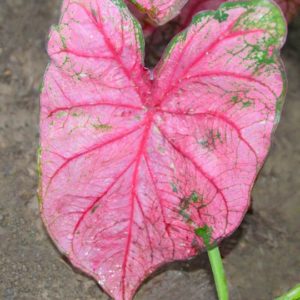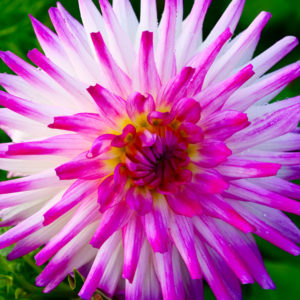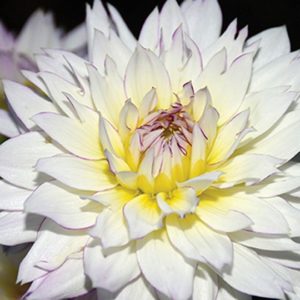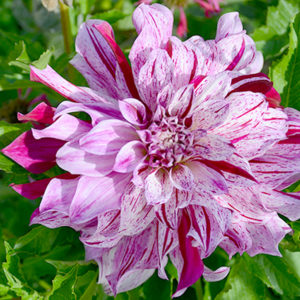Description
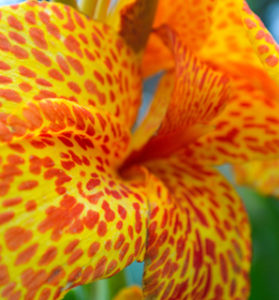 Canna Lily,
Canna Lily,
Picasso
Canna Lilies are some of the truly historic plants of the Americas. Though they are known to be indigenous to tropical Asia as well as Florida, Central and South America, it was the American species that captured the attention of the Europeans and British. The original native plants were known to reach heights of 10 feet in their natural habitats and their blossoms were always red and somewhat modest. It was only after cannas reached Europe and England that bronze leaved varieties were developed and the color range of the blossoms expanded to include pink, white, yellow, orange, salmon-pink and bi-colored.
American cannas were introduced into Europe in 1570, and in 1736 they arrived in England when John Custis of Williamsburg sent seeds of Canna indica to Peter Collinson in London. Canna indica was known as Indian-shot in the Americas. The name was a reference to the extremely hard canna seeds produced by each plant. Legend has it that the seeds were so hard that the Native Americans used them as shot when guns were presented to the indigenous peoples by the European explorers who then refused to supply traditional shot for the weapons.
C. indica cannas are among the oldest species still in cultivation. They are native to Central and South America, not India as many believe. Modern C. indica varieties are much taller than the C. flaccida species, usually reaching heights of 3-5 feet.
C. flaccida is a species of canna native uniquely to Florida. It was introduced into Europe in 1788 and soon thereafter into England.
During the Victorian Era (1837-1901), cannas became very popular in England as specimen plants in the conservatories of the middle class, but their popularity waned in the 20th century as British, European and American middle class families gave up their conservatories and other ornamental gardens. In the latter part of the 20th century, development work with the Florida native canna species, C. flaccida, began to produce ‘dwarf’ varieties of cannas which adapted well to containers and small urban gardens. The cultivars today are almost exclusively the dwarf varieties, but recently some C. indica cultivars have been introduced which reach heights of 48-60 inches.
Planting Canna Lilies
Cannas grow from tuberous roots which are hardy in Zones 7 and higher. They are indigenous to Central and South America, the West Indies, tropical Asia and one species, C. flaccida, is native to Florida. Nearly all of the canna cultivars available today were developed from C. flaccida.
Canna tubers should be planted in late spring when the danger of frost has passed in fertile, friable soil that has warmed to a depth of at least 2 inches. The tubers should be planted 4-6 inches deep and thrive when fertilized once a month with a complete fertilizer like 10-10-10. Constantly moist soil is a requirement. Once the plants have ceased flowering in the fall, dig the tubers and store in a cool, dry, dark area.
Growing Canna Lilies in Containers
Cannas make exceptional container plants – 1 canna per 10 in. diameter pot. They require frequent watering and fertilizing. They are some of the easiest and most rewarding plants to grow in containers. The best soil mix is 60% topsoil, 20% peat moss and 20% compost or dehydrated cow manure. Check out the soil mix described in detail in our Harvesting History YouTube video. Do not use prepared soil mixes.
The tubers should be planted 4-6 inches deep and thrive when fertilized twice a month with a complete fertilizer like 10-10-10. Constantly moist soil is a requirement. Once the plants have ceased flowering in the fall, they can be stored in their pots or their roots lifted. Store roots and/or pots in a cool, dry, dark area.


